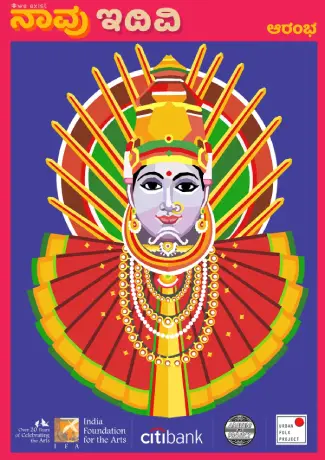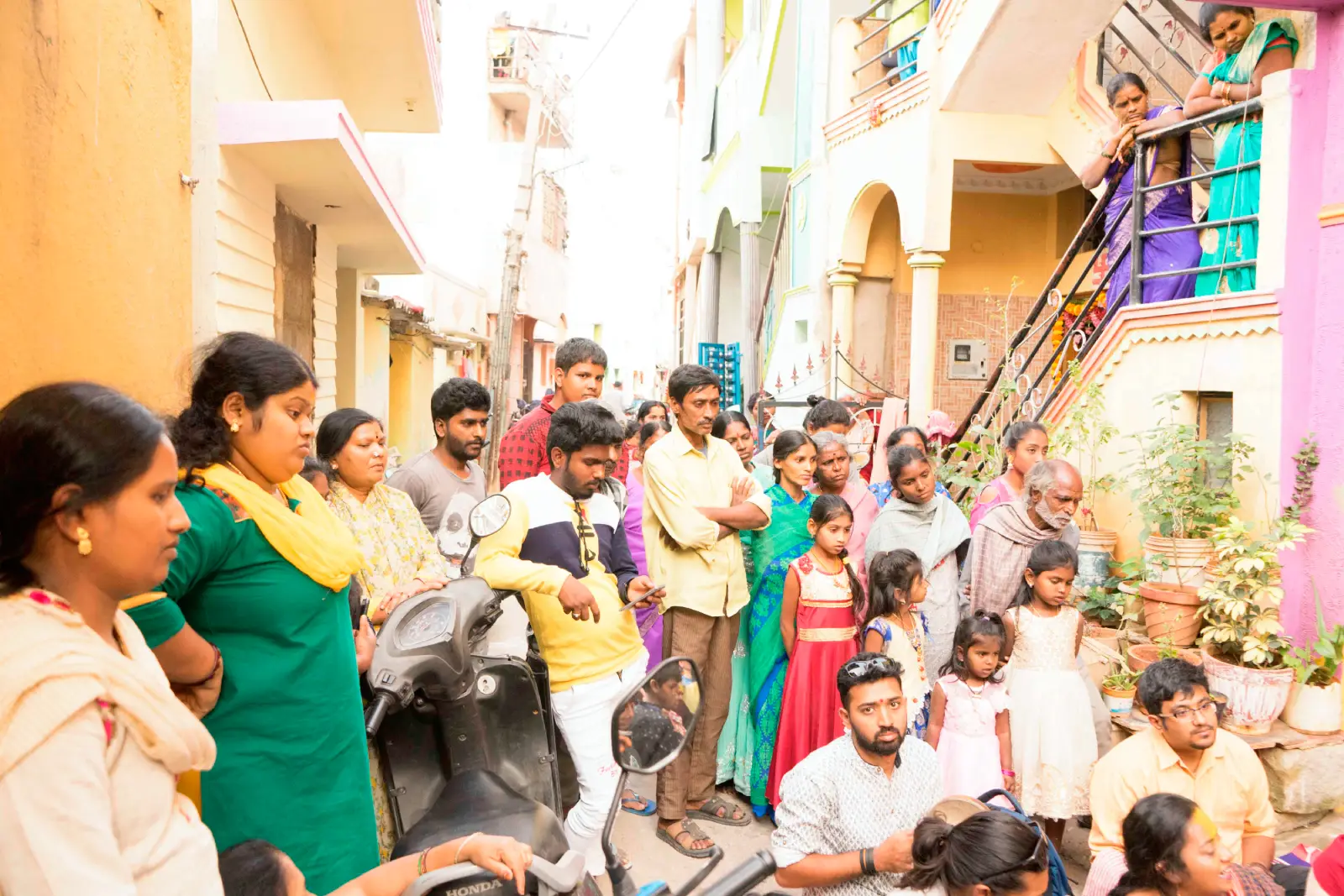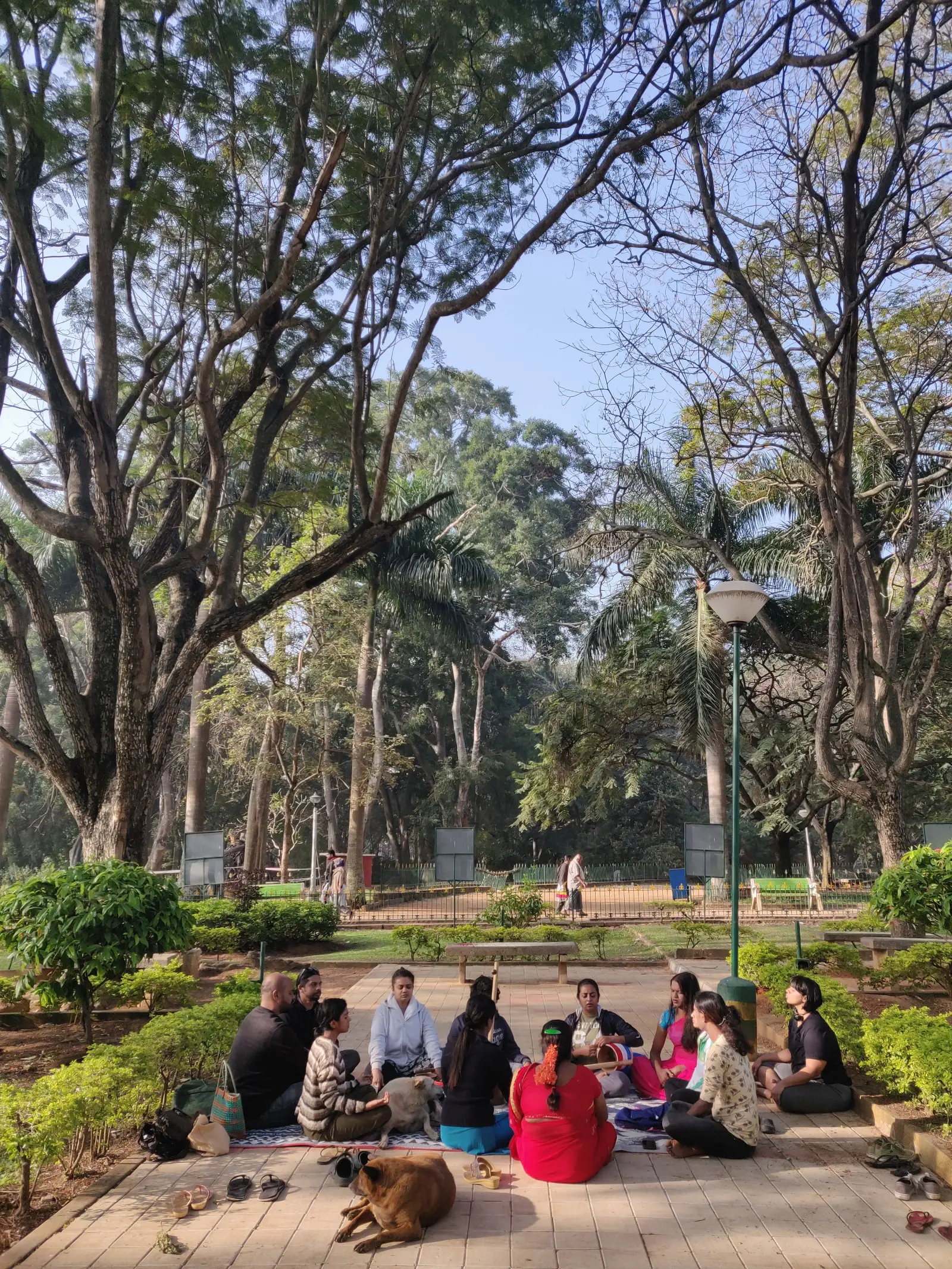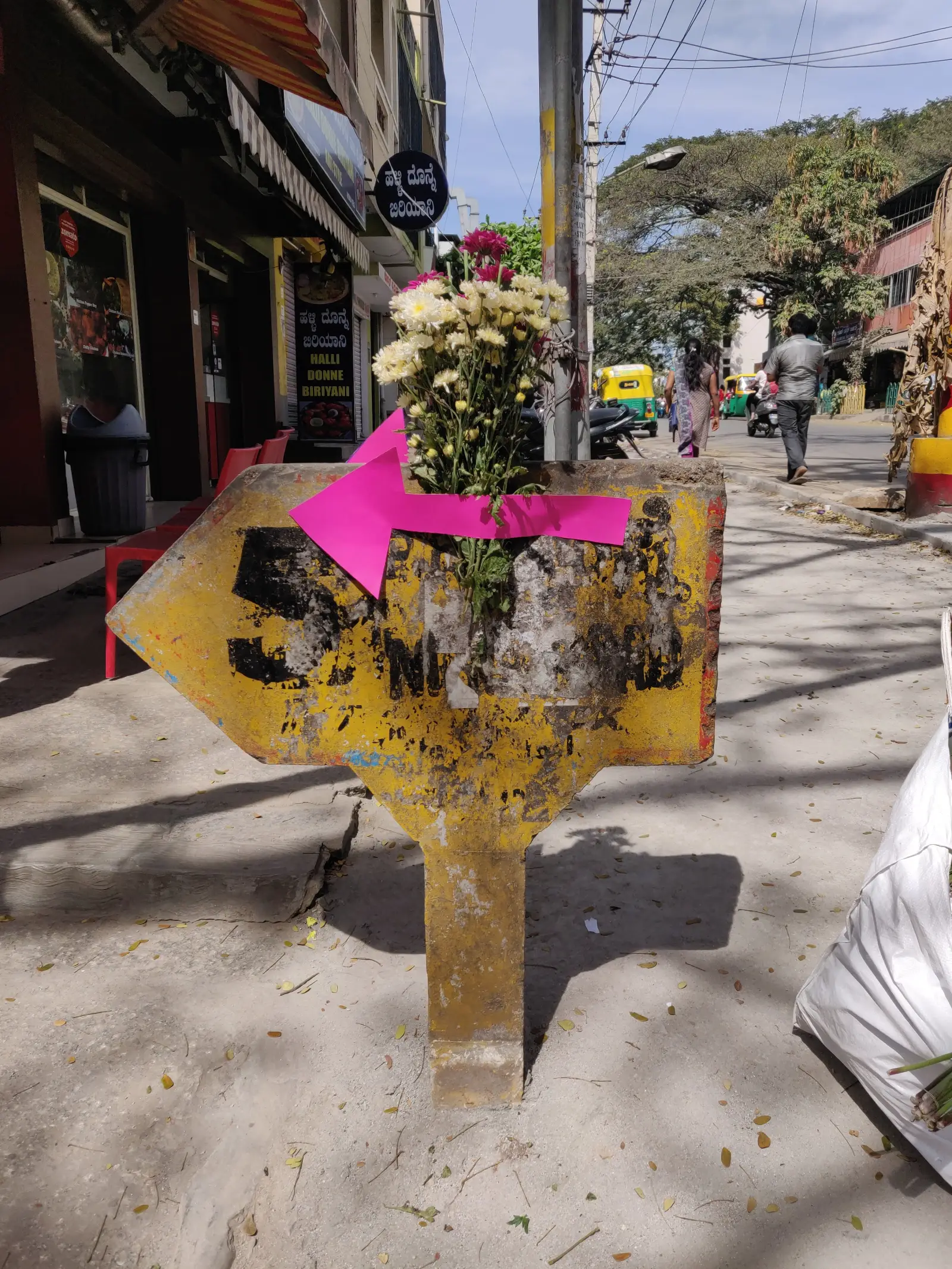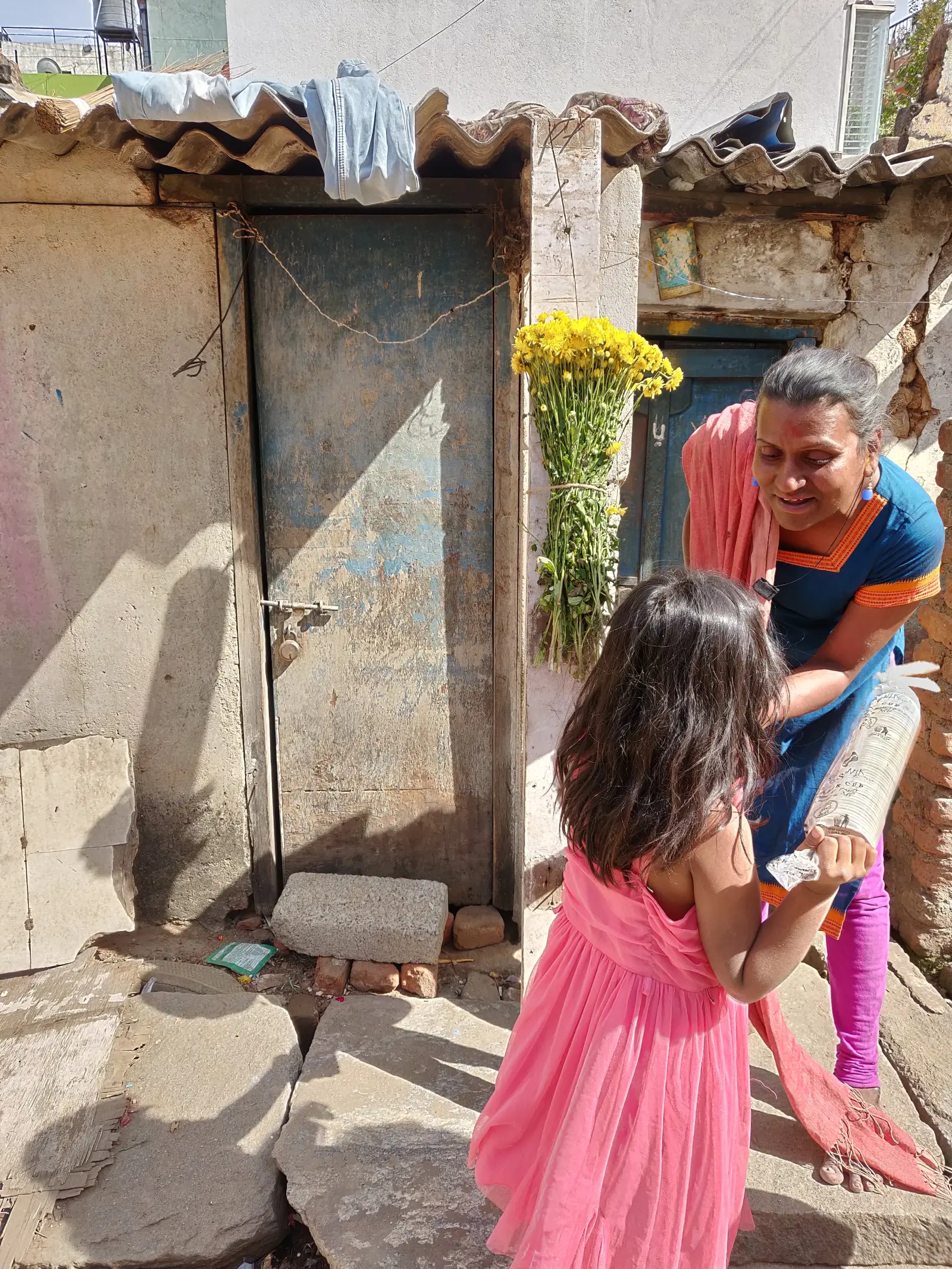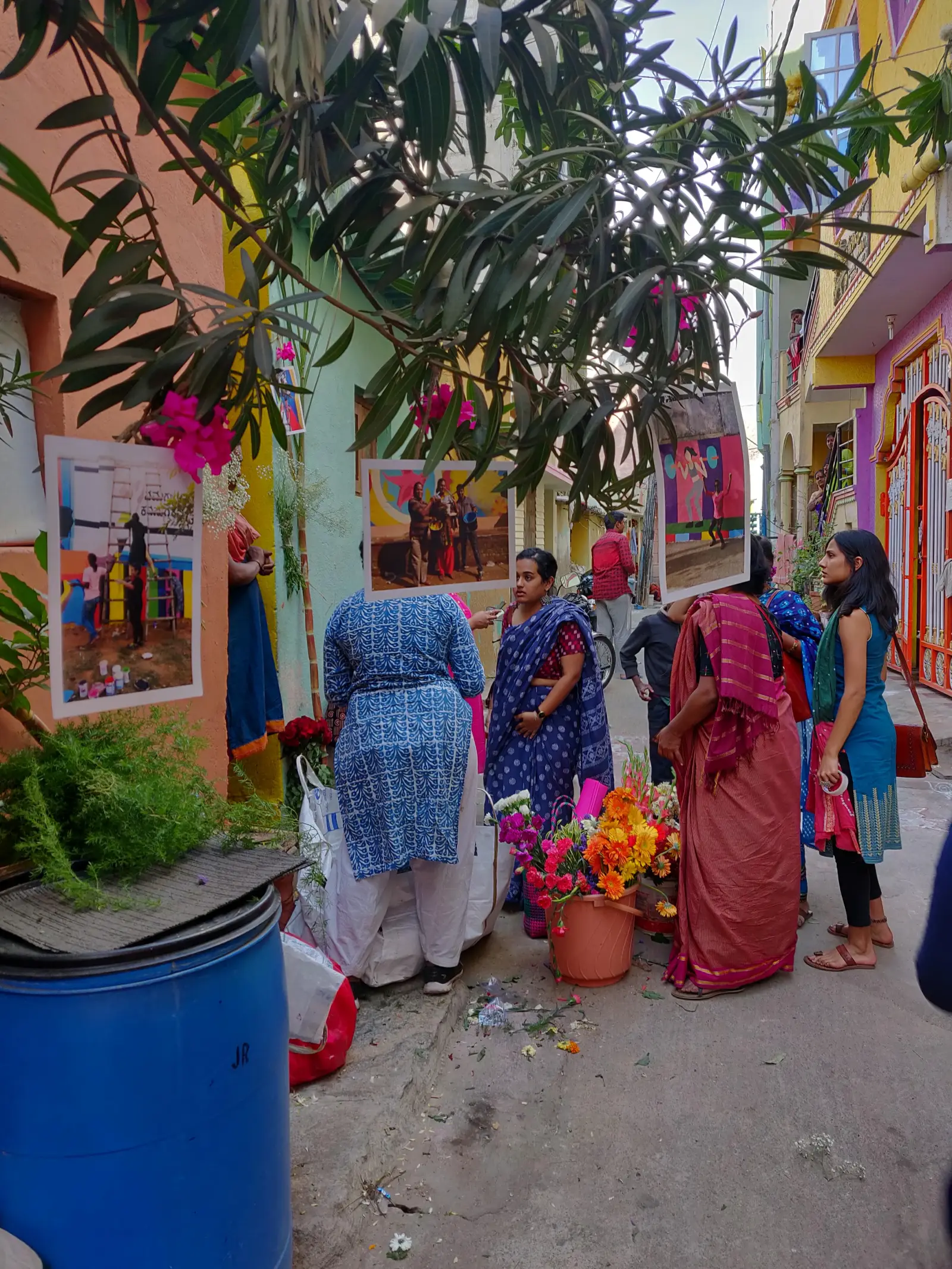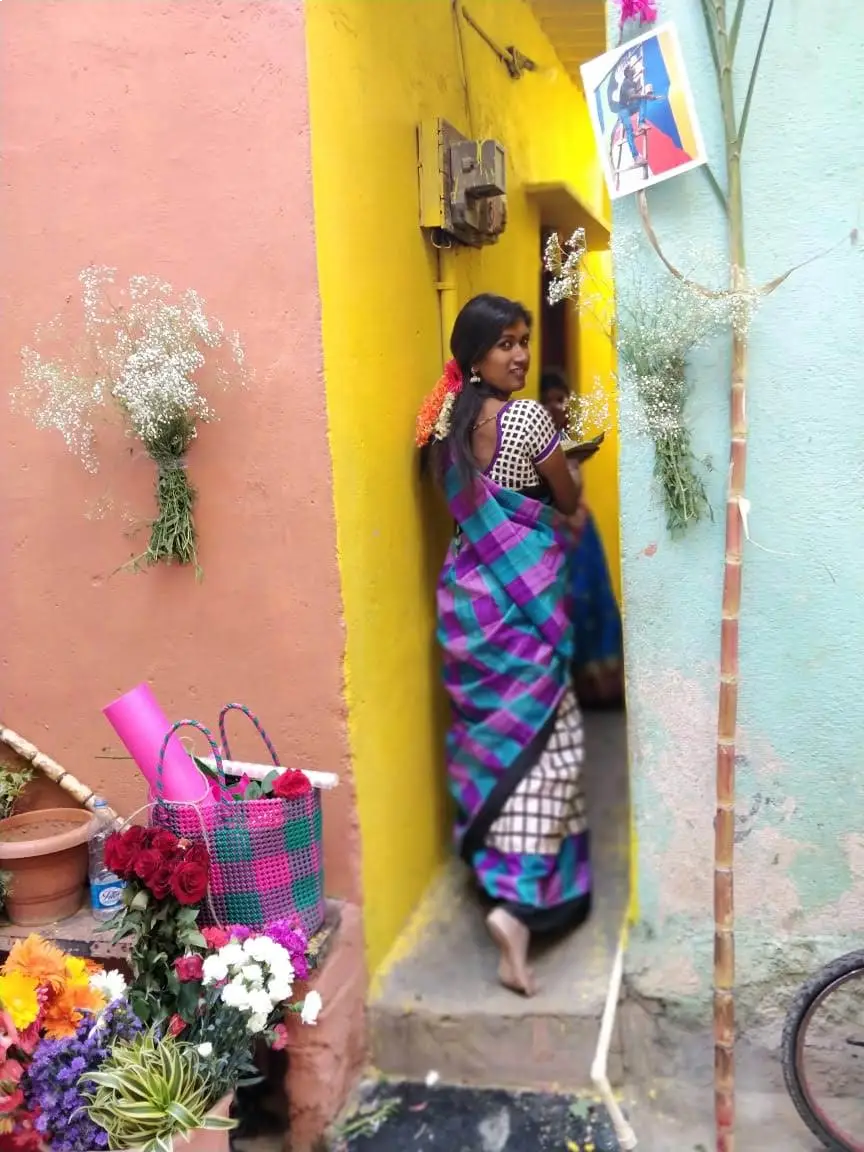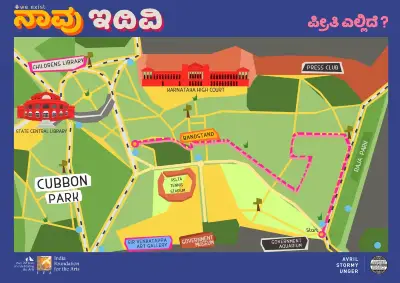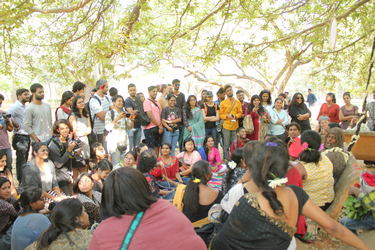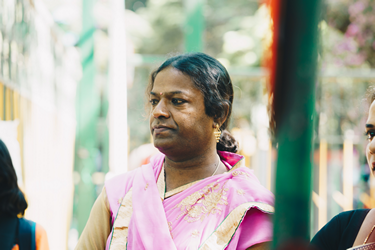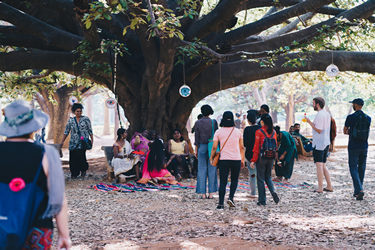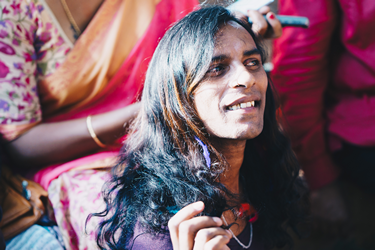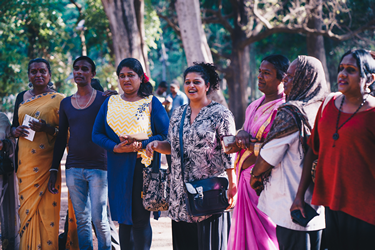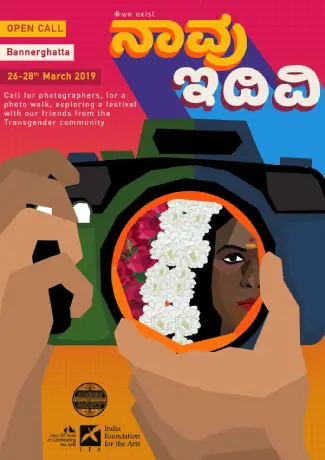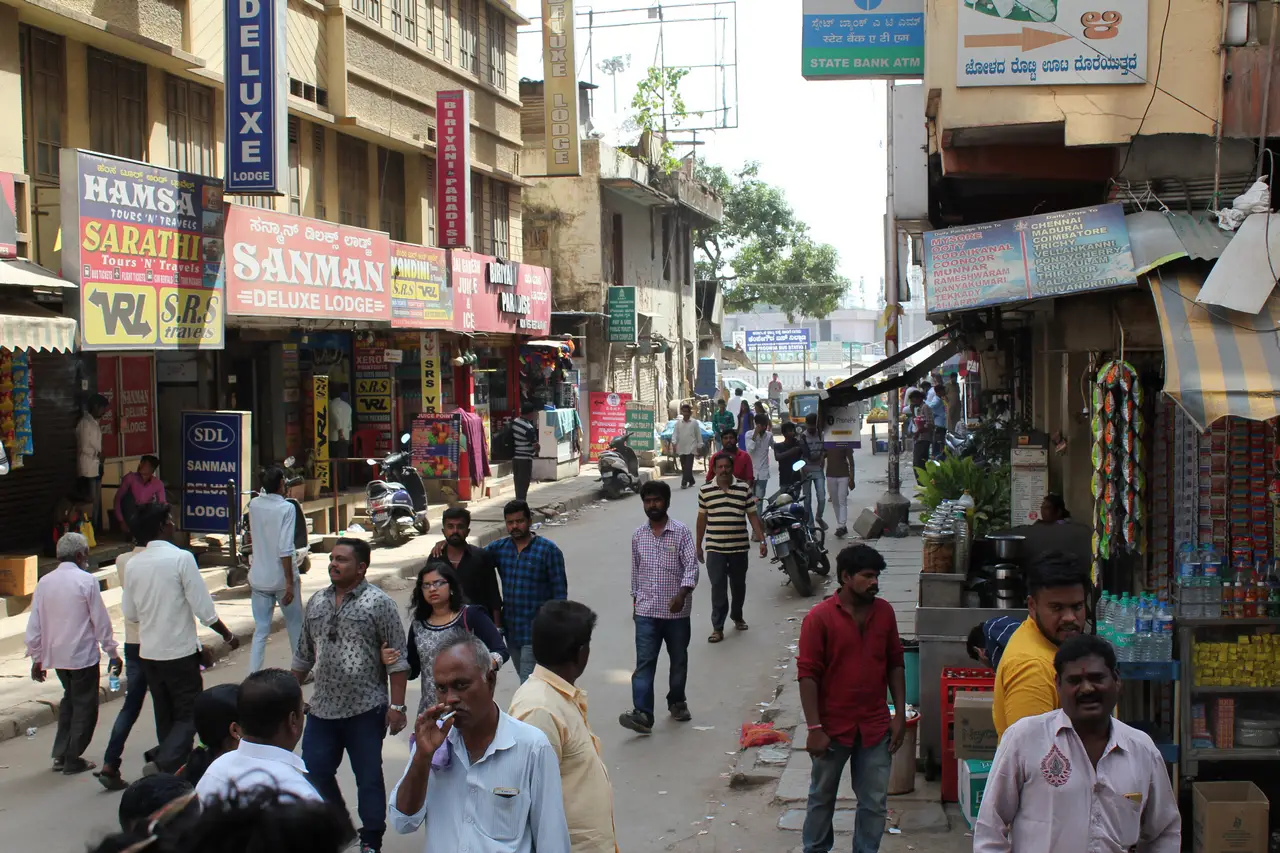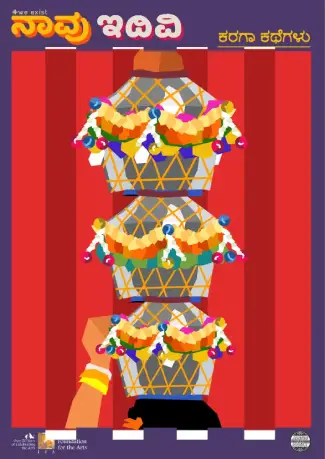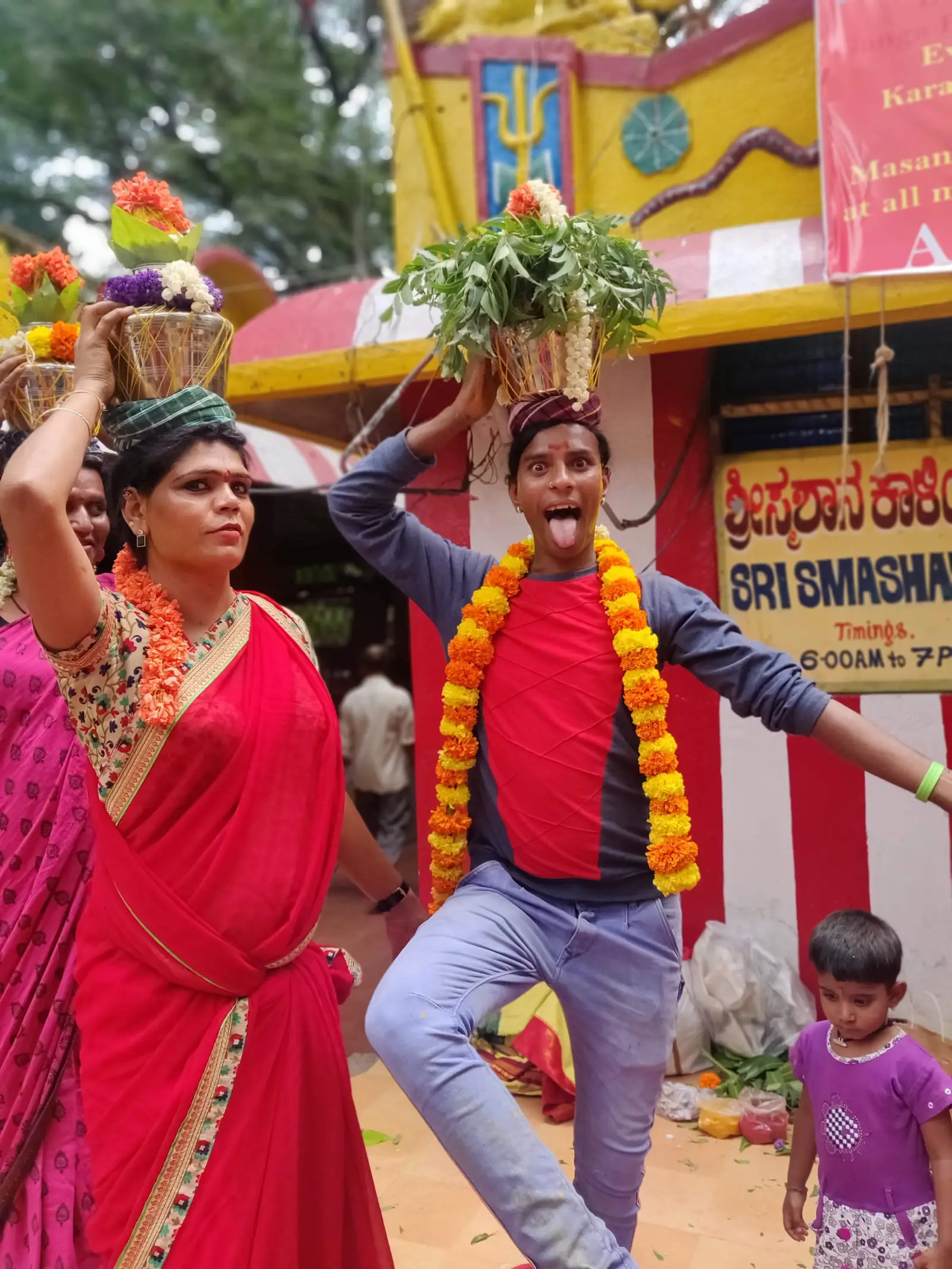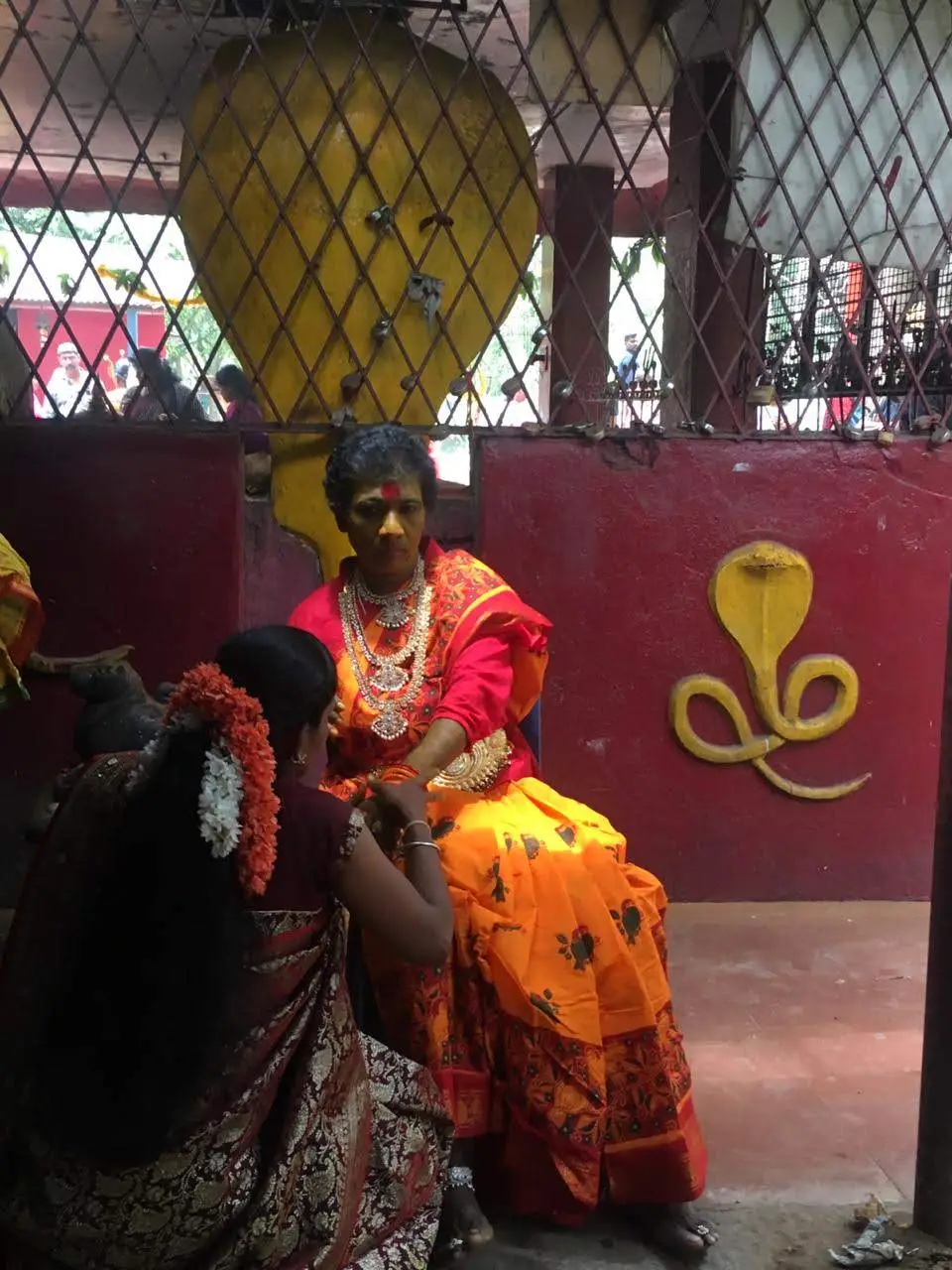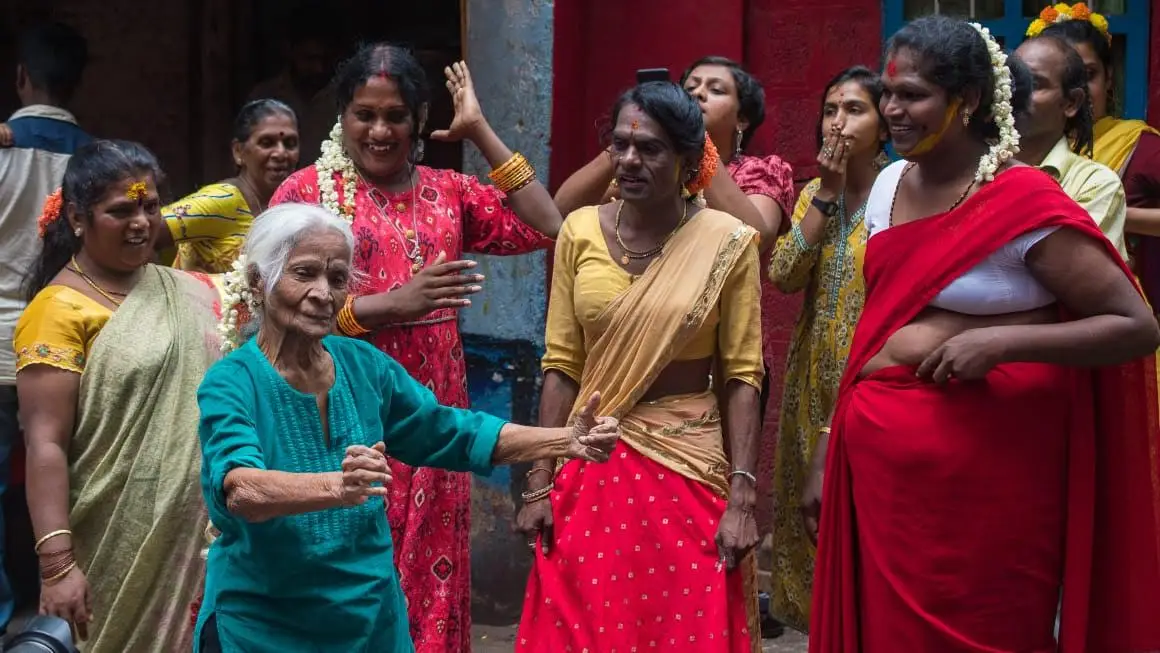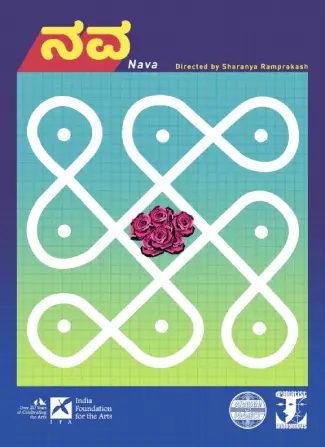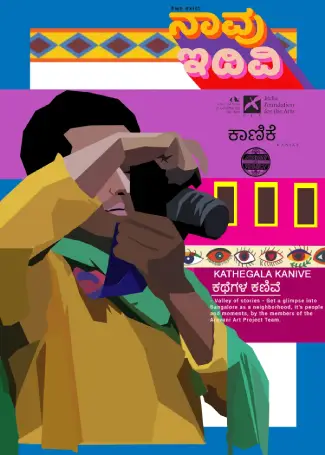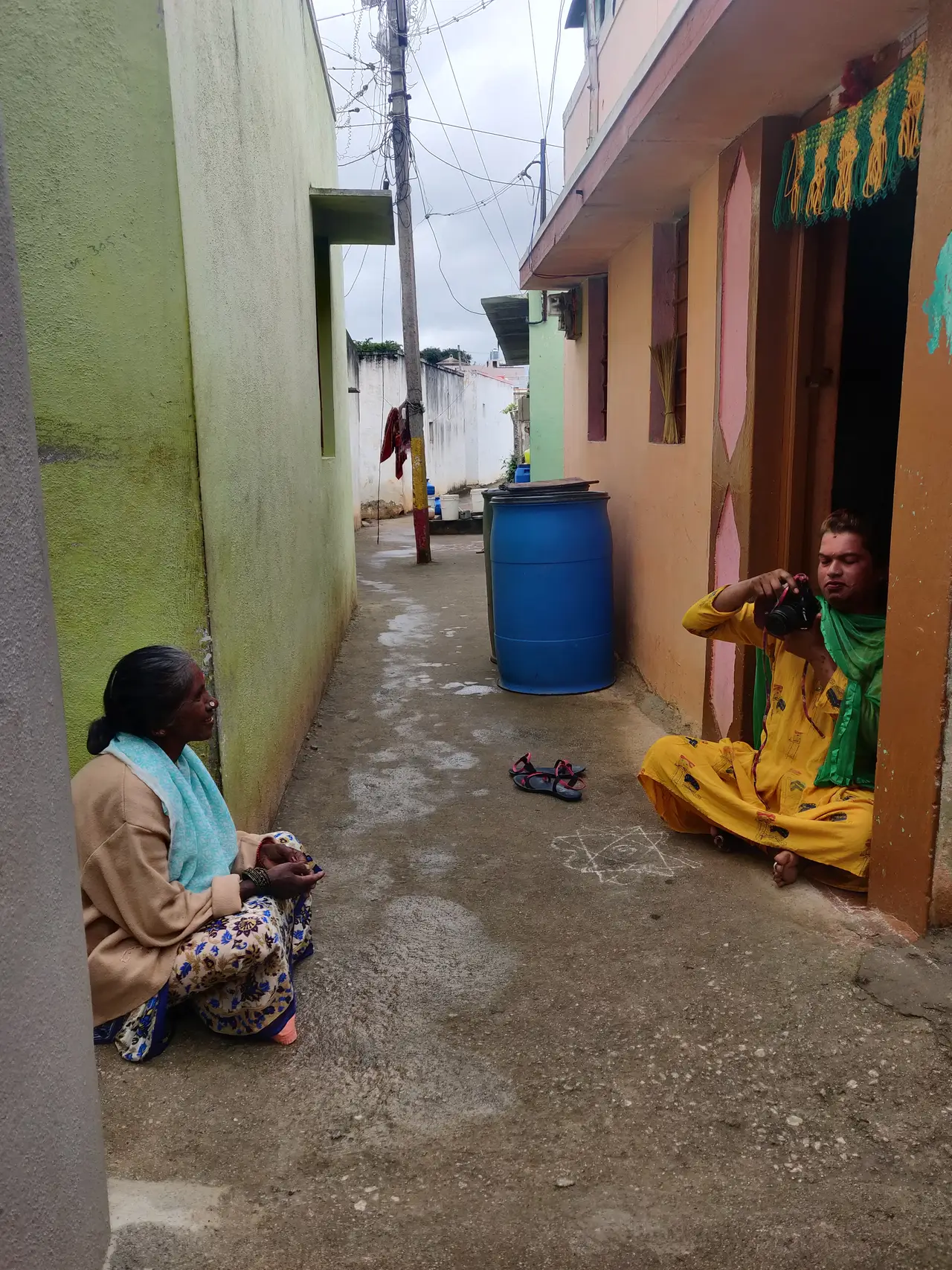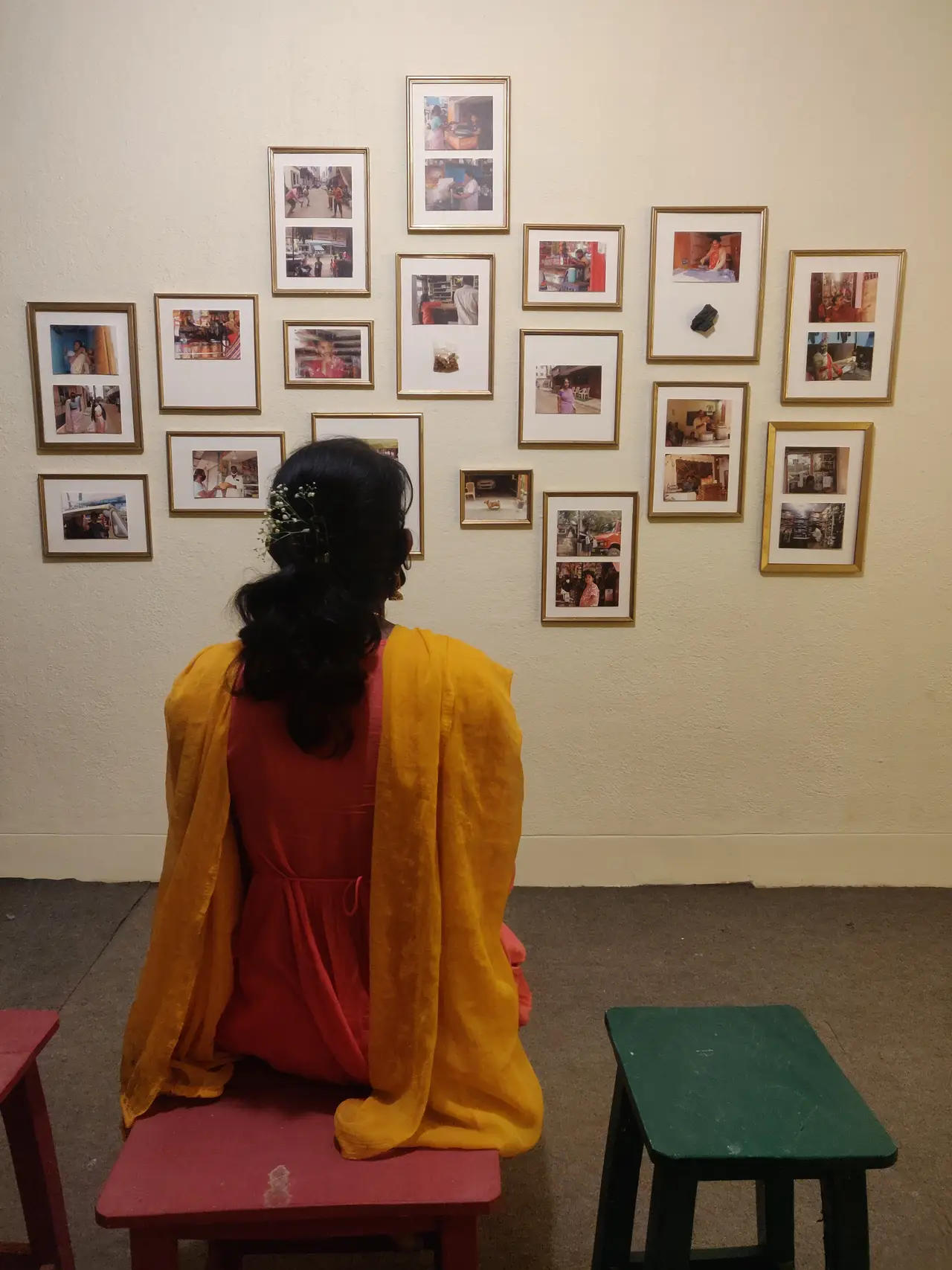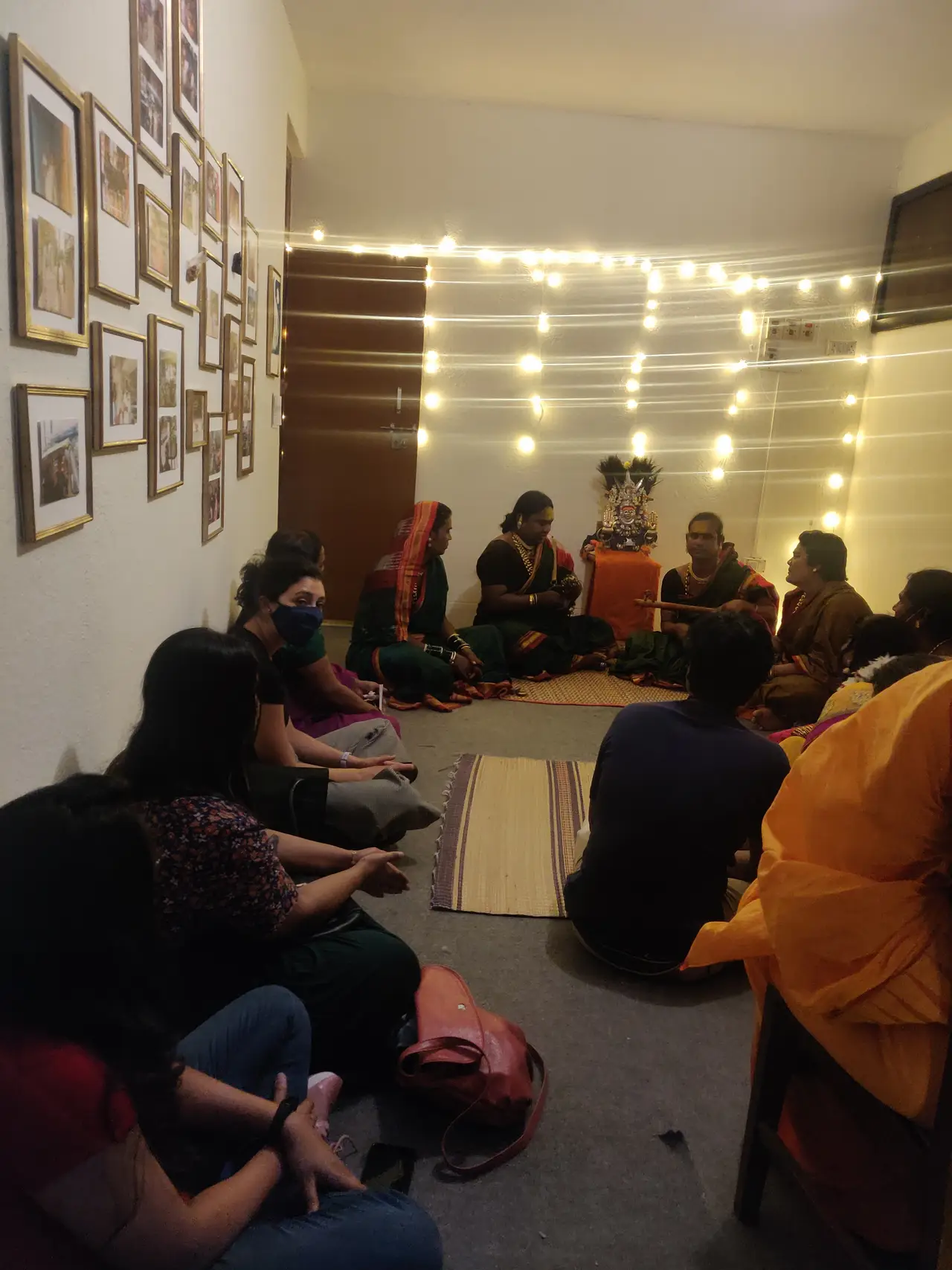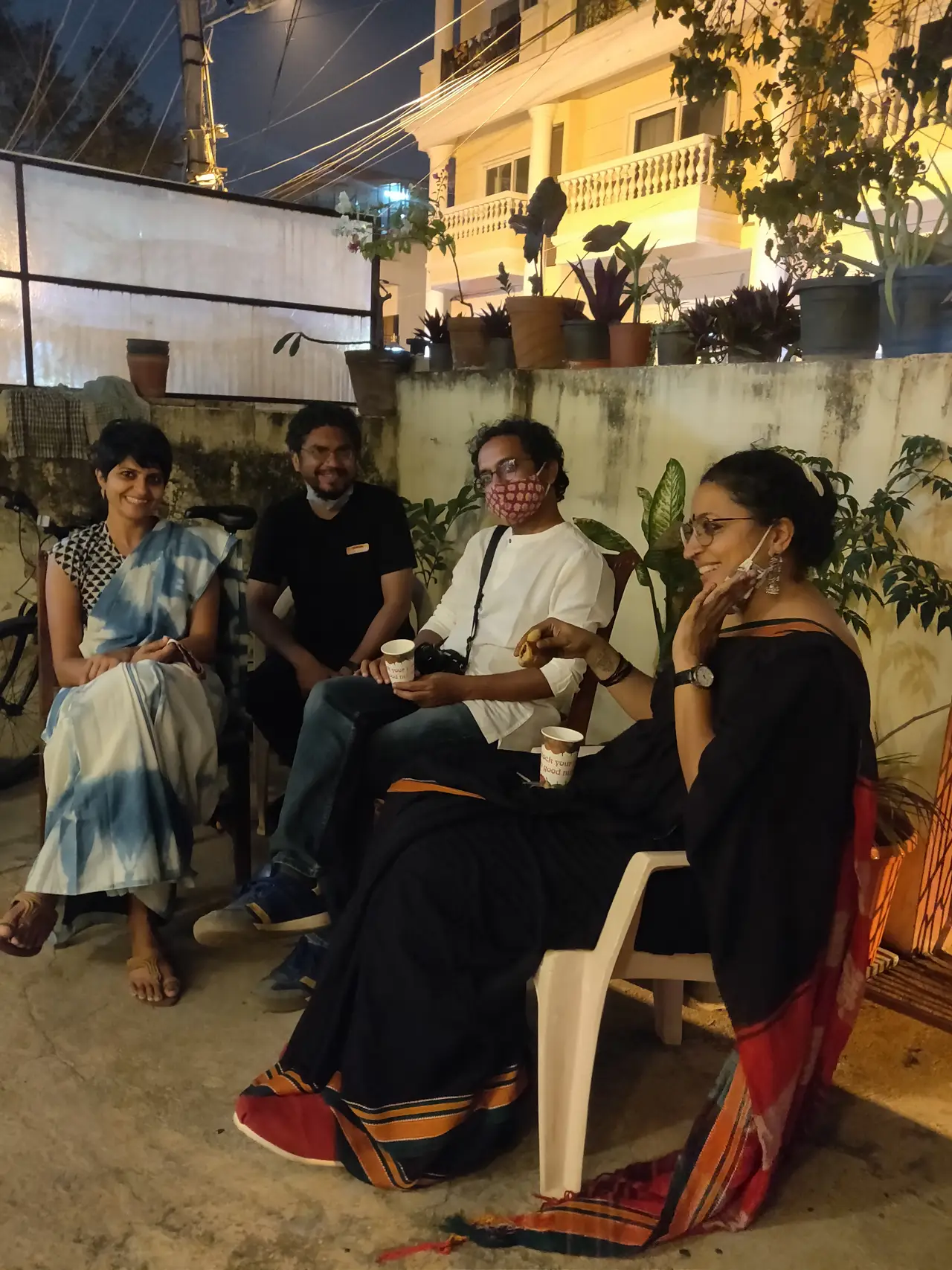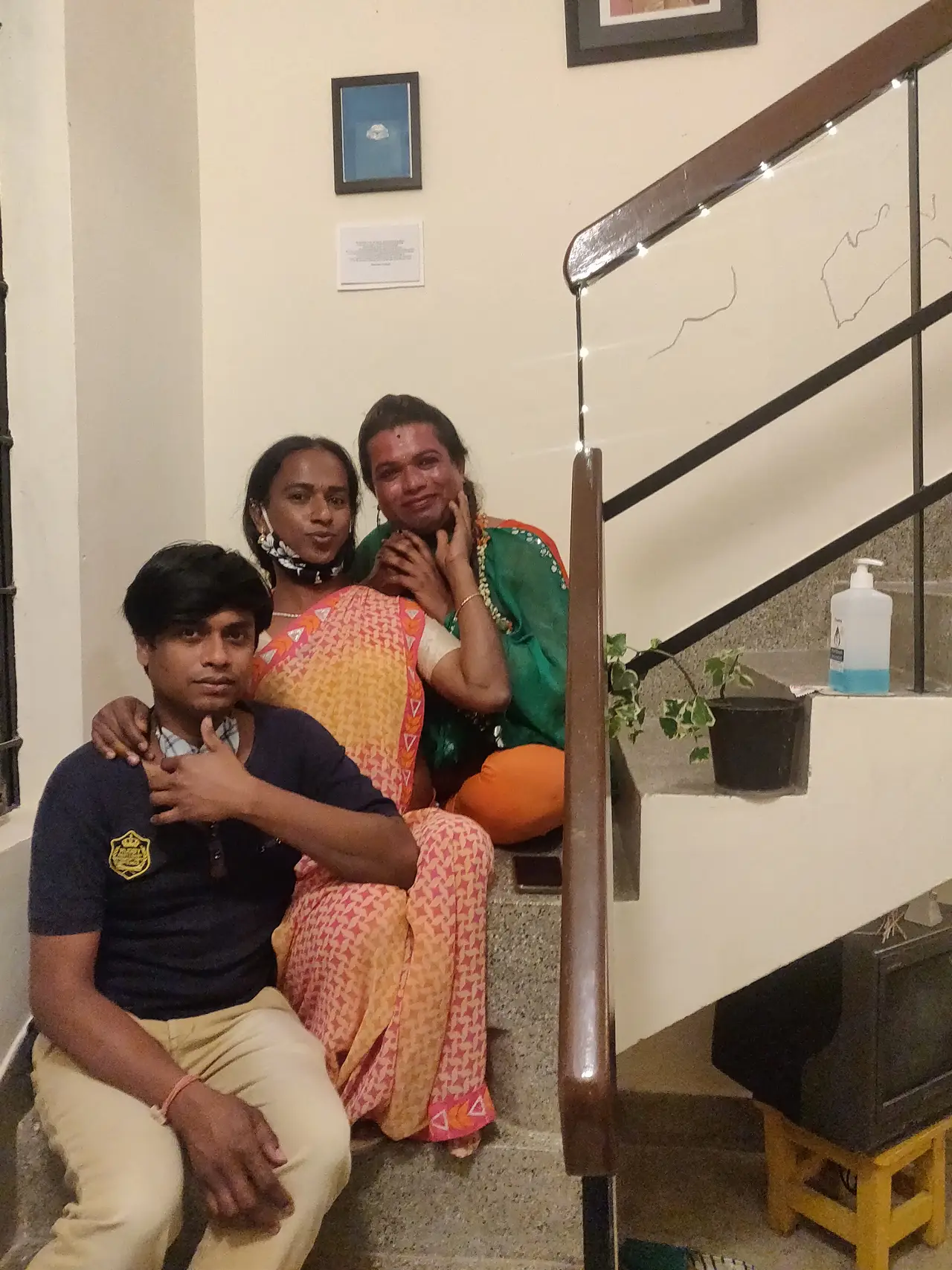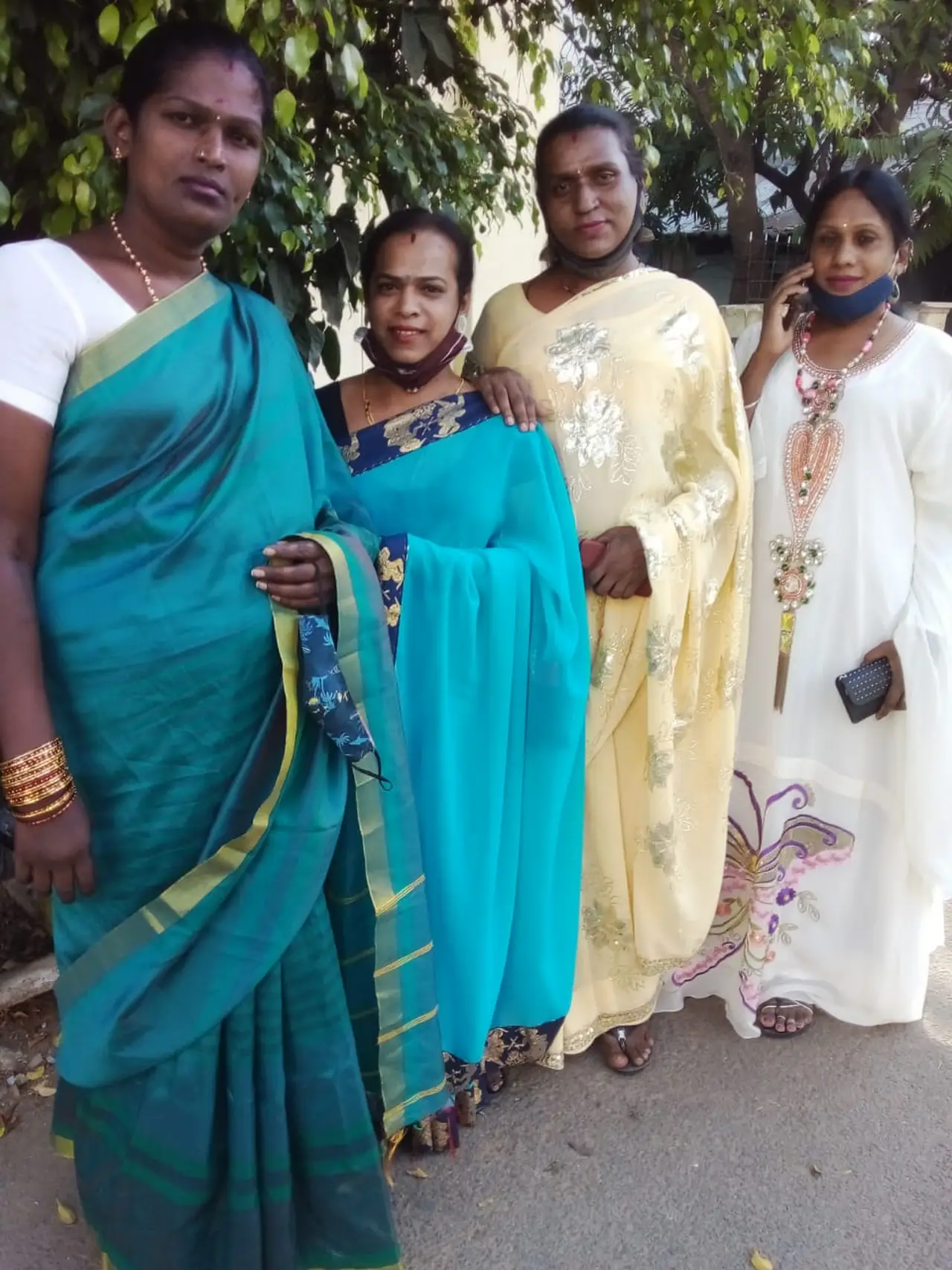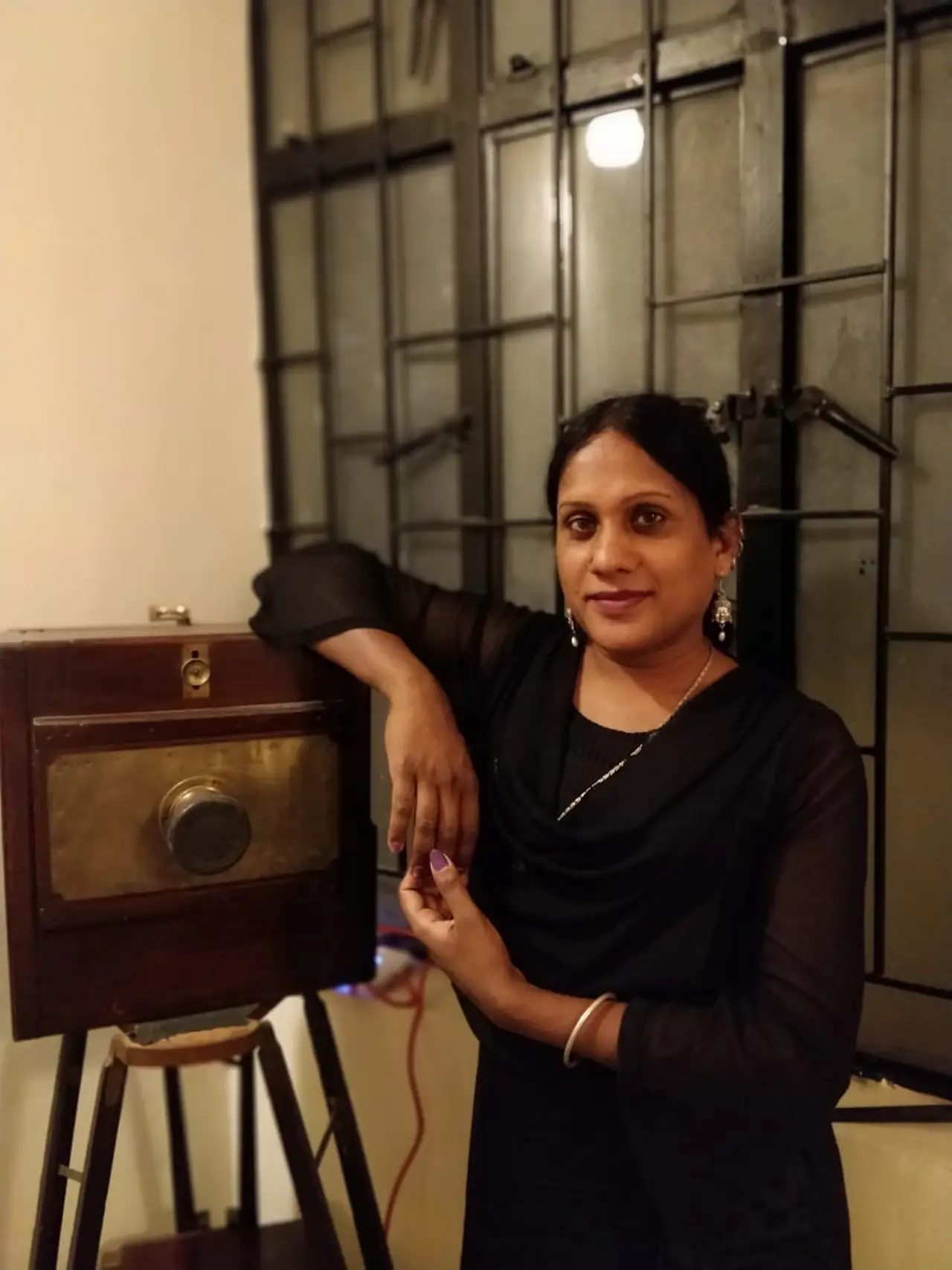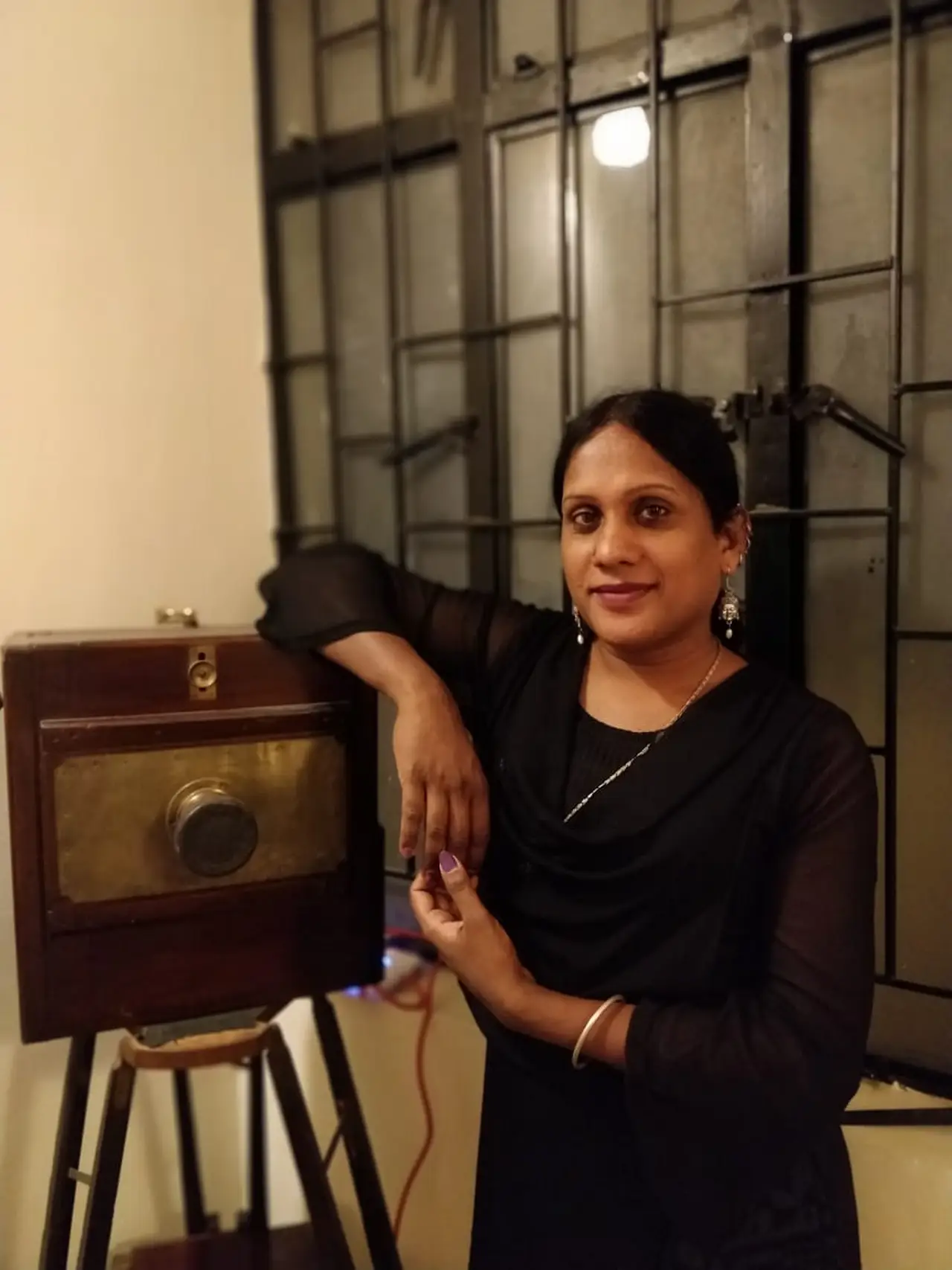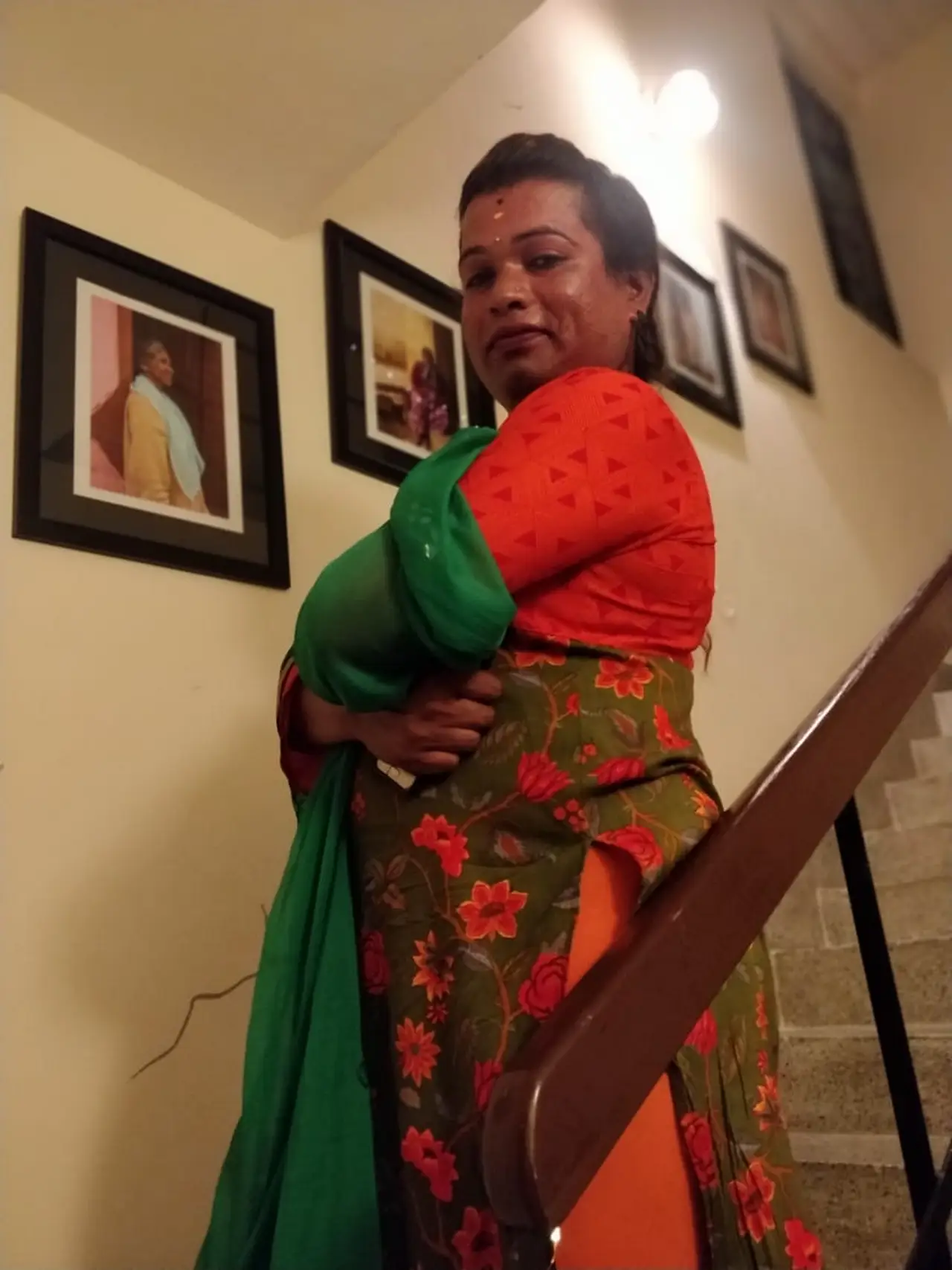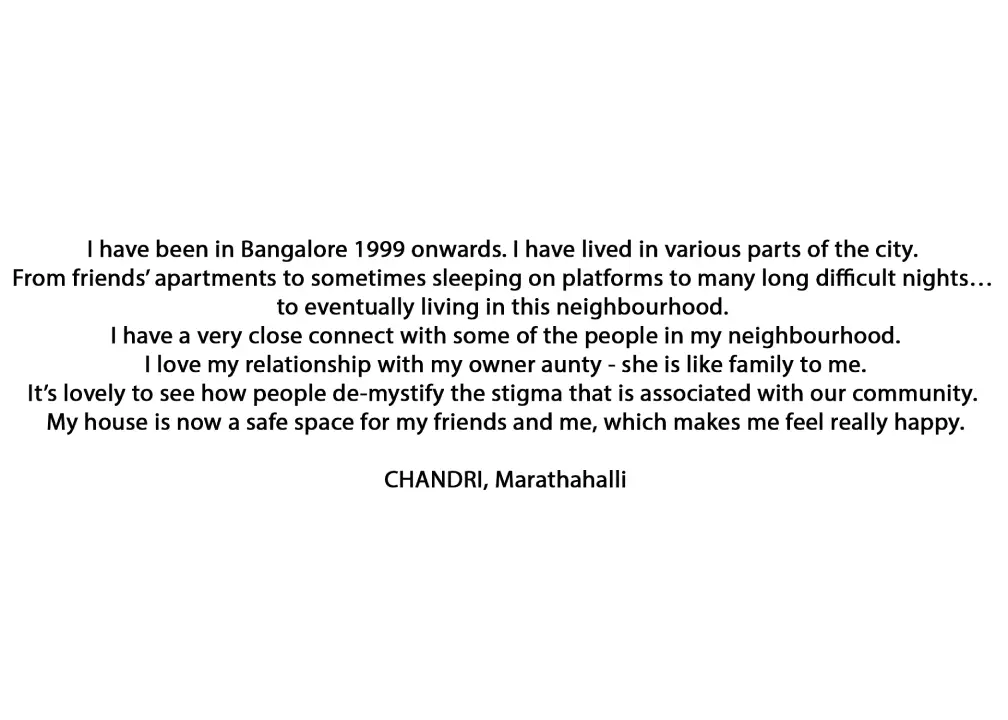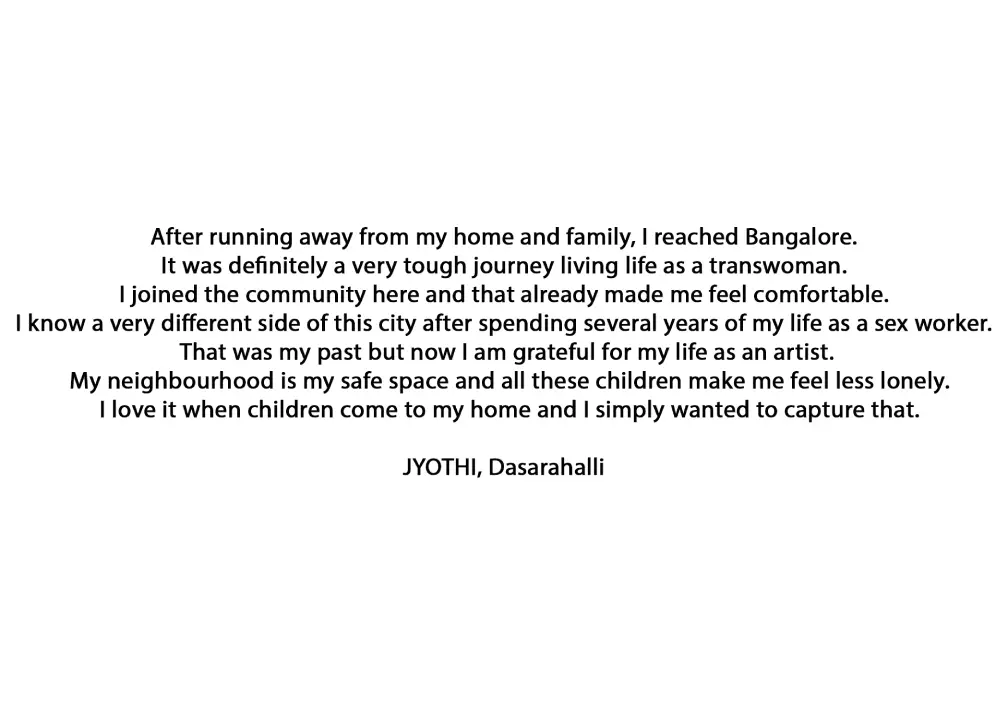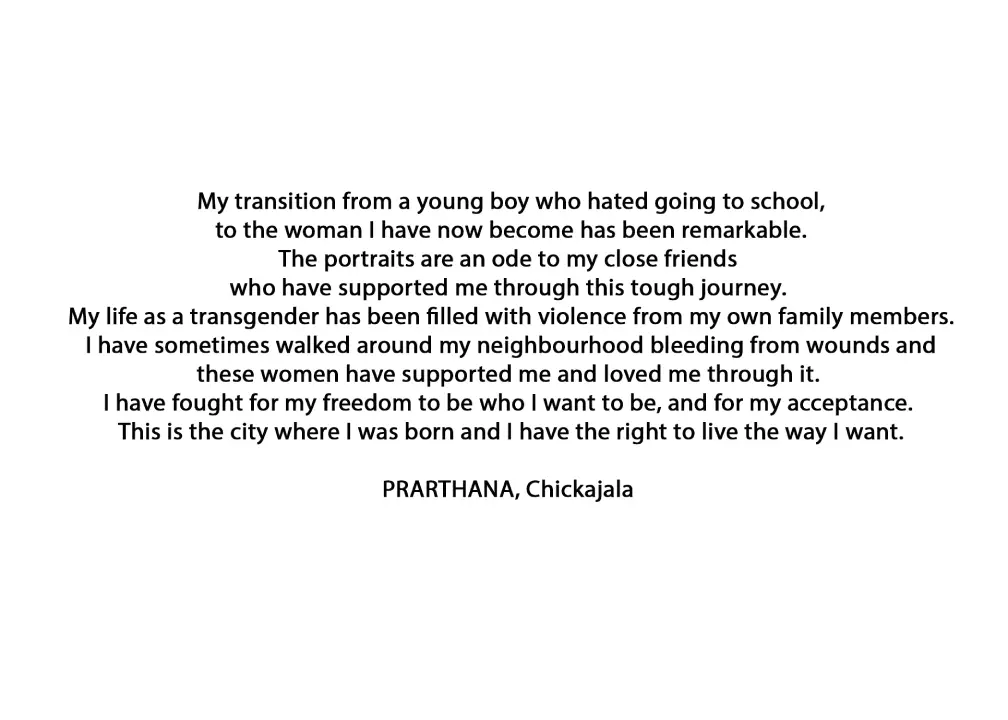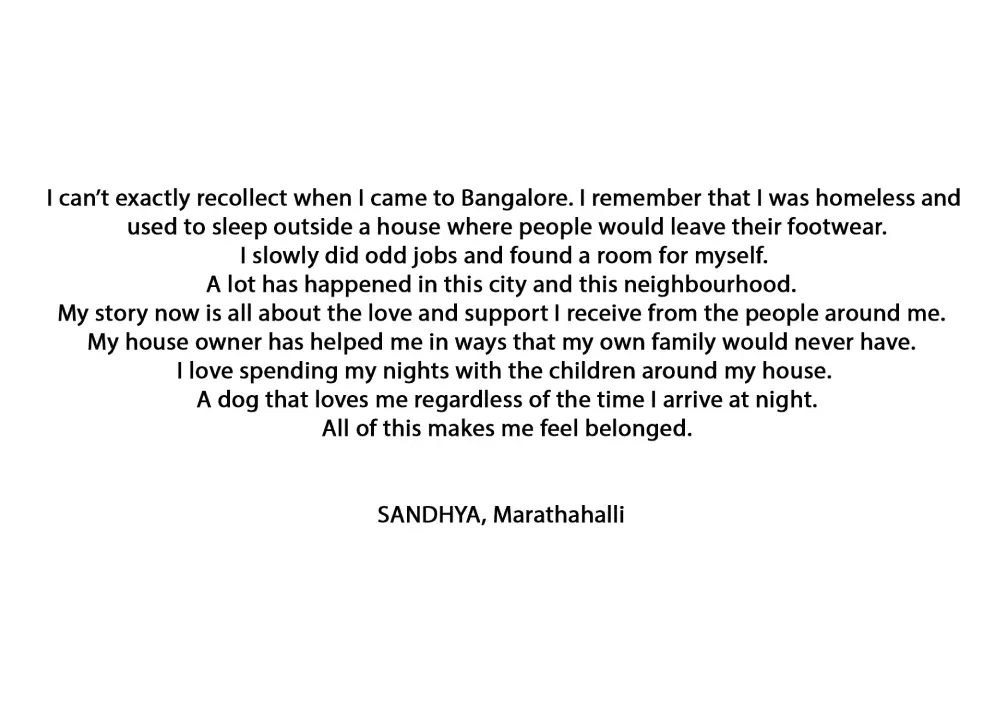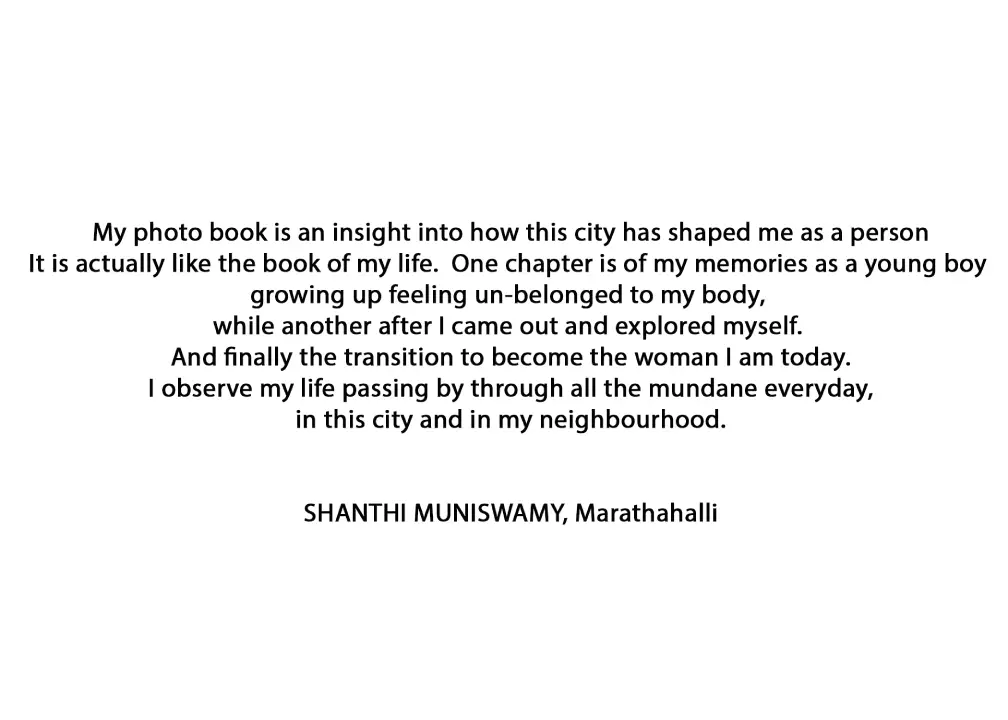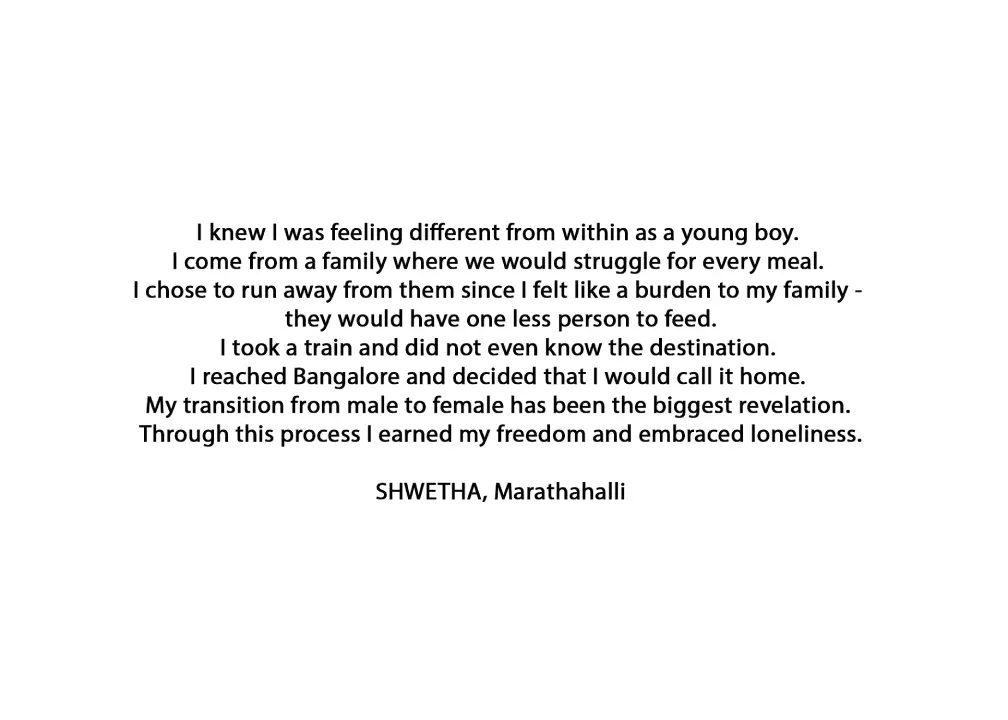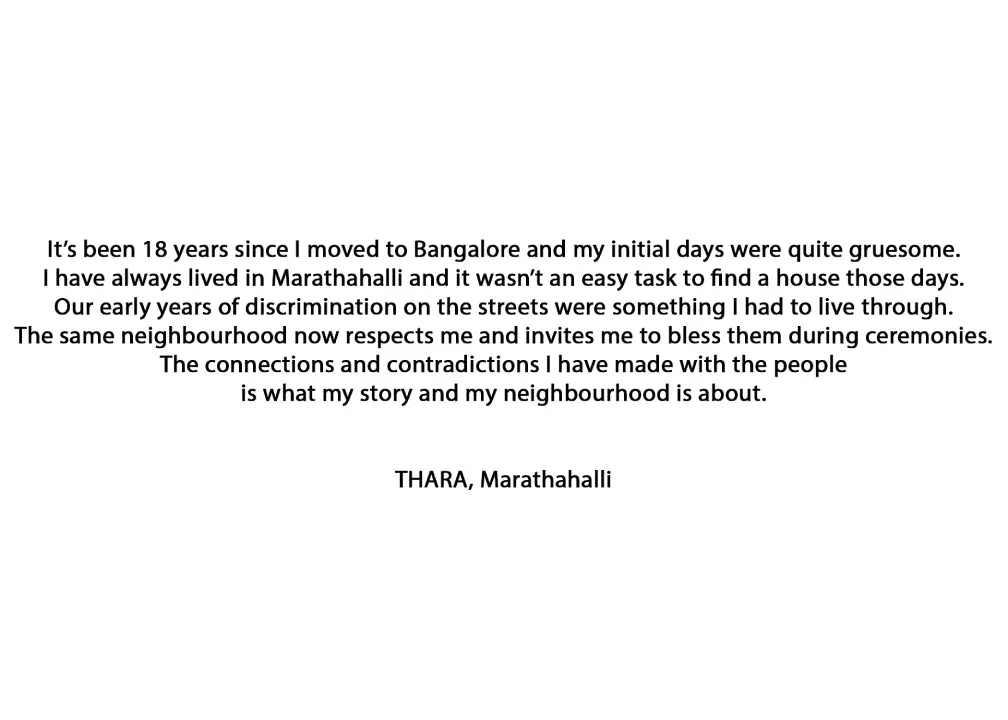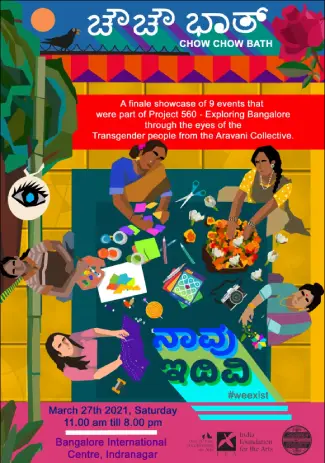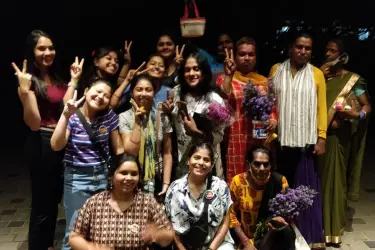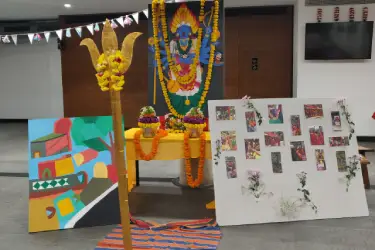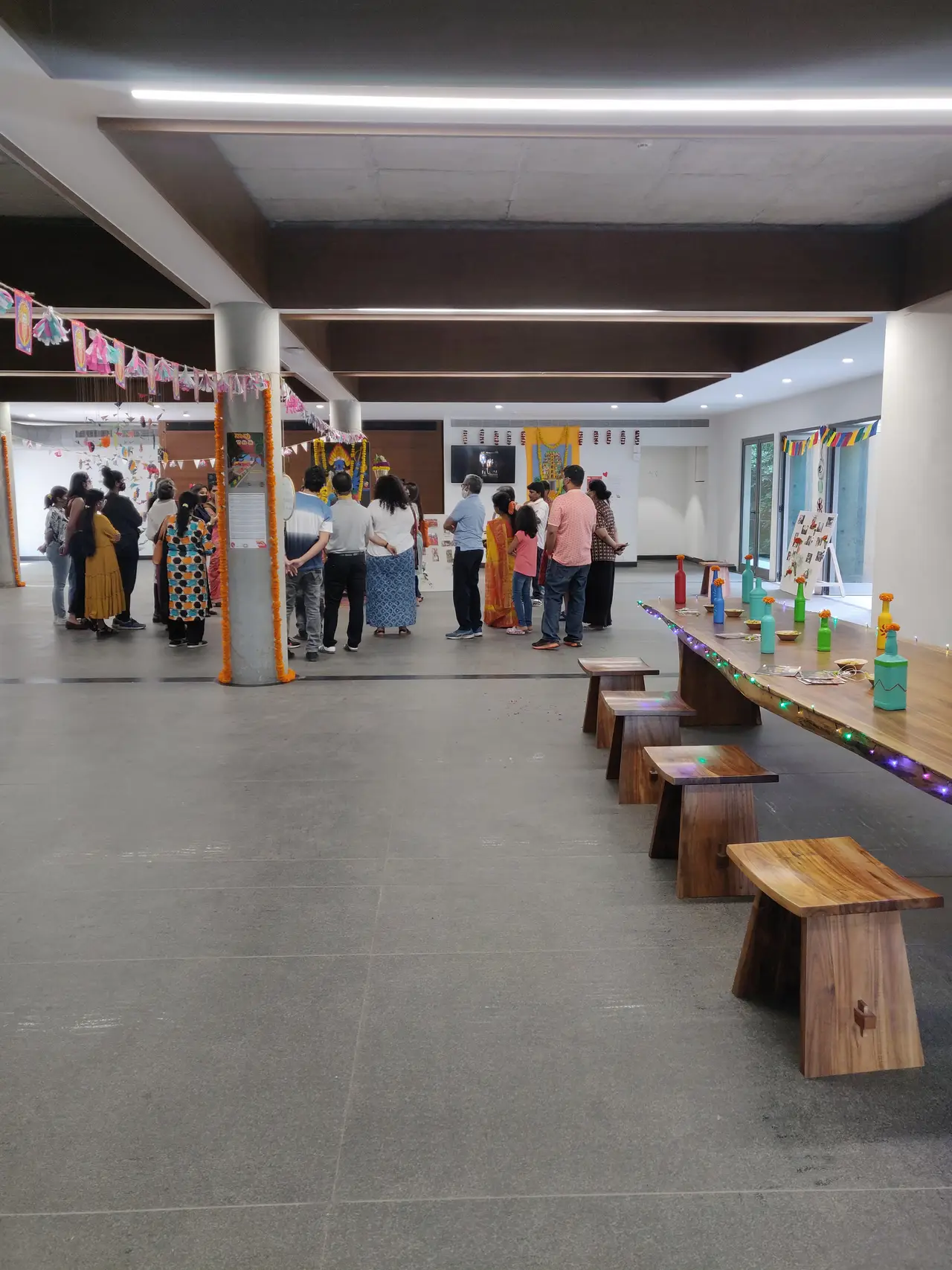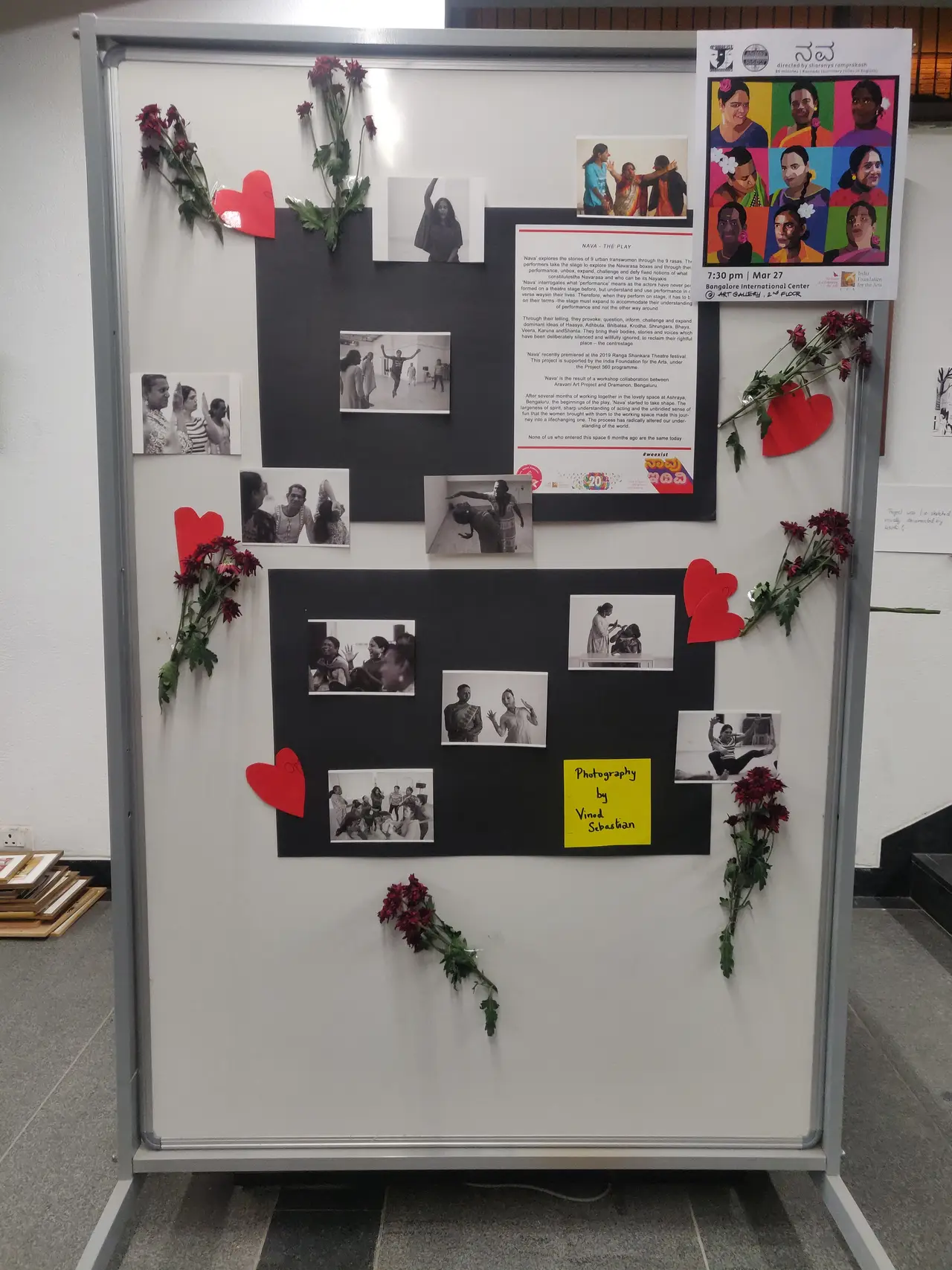STORIES - NAAVU IDDHIVI - WE EXIST
Aravani Art Project
10th March, 2022
Exploring spaces and creating public projects in Bangalore, through the eyes of the people from the Transgender community.
This project was supported by BANGALORE 560 - A grant from India Foundation for the Arts.
Foreword
Navvu idhivi means- 'We exist’. How good it is to know about someone, who is amongst us and you’d never realize that they are amongst us and almost invisible nor heard about their stories and are always so secretive almost living in a parallel universe.
Here is our first opportunity with IFA to have the Bangalore 560 grant for this year 2019 where one could listen, see, walk, breath and share beautiful moments and journeys together with us Transgender people from Bengaluru. The city is seen through the eyes of people from the trans community in our vicinity. I was in disbelief.
It all started a few months ago when Poornima called us for this very important meeting at Lalbagh in the city. We usually like to meet in different places , just because we can.
Poornima started the conversation by asking us “how many of us are from this city and how close is the city to you?” Most of us are born here and few have been here in this city for more than 15 years and have had some kind of close connections and experiences in this city.
We asked her why and she replied saying that there are a series of projects coming up that are very different from what we are doing now and that it will be more of storytelling, listening, singing, acting and / or the other art forms, apart from the murals we do. These projects would be assigned to us and conducted by us. I was in shock. I had forgotten that we hold so many stories and hidden artists, without an opportunity to express or channelise in the right way.
We all were excited and shared our views and experiences about the city we live in. After that we collected a few interviews/ recordings of others living in this city from the community and shared their moments and experiences with each other.
It was so interesting for us to know different versions of the city, how the city was before, the history on where all they would take shelter to save themselves, for love, for sex and to protect their identities, where would spend most of the time in loneliness and/or in togetherness, their eating, drinking joints and how safe < unsafe was the city towards us.
It was amazing to hear various versions of Bangalore based stories and of course to get to understand and know each one’s perspectives and stories which was so amazing.
This documentation is a glimpse of the 9 events that took place in Bangalore, exploring spaces and stories that belong to the people from the Transgender community. Each project was only possible because of the generosity and the knowledge that was shared by Shanthi, Chandri, Purushi, Jyothi, Priyanka, Mayil, Booby, Kumari, Shwetha, Prarthana, Veena, Sandhiya, Thara, (Late) Parichaya, Aishwarya, Nakshatra, Sana Suman, Harish, and so many more from the community.
We are also deeply thankful to all the various artists we got to work and collborate with to create a unique experience and story-tell in the right way. Thank you Shilpa from the Urban Folk Project, Avril Stormy Unger, Pallavi Sridhar, Pavana, Supriya SV, Ankur Jadhav, Aditya Datar, Divya Runwal, Chirag, Dramanon team : Sharanya Ramprakash, Sridhar Prasad, Swetanshu Bora, Aswin Varrier & Surabhi Herur, Bhagyamma, Jayaram, Kanike Studio: Indu Anthony, Aparna Nori, Vivek Muthuramalingam & Krishanu, Finale team: Nuhar, Hamsa, Vaishali, Vibha, Megha, Riya, Keerthana, Pavithra, Nisha, Neha and Pavithra students from Karnataka Chitrakala Parishat.
The experience of each event as part of the Bangalore 560 grant helped us all learn and unlearn the importance of the spaces that exist within or society, the politics that lies within the gaze between night and day, the idea of a safe city when it comes to the trans people, migration, celebration, faith, devotion, love, hate, violence, discrimination, friendship and sisterhood.

